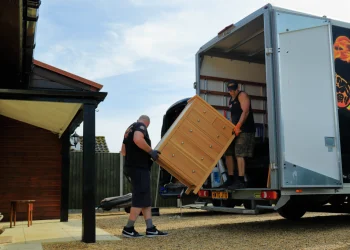Web design firms that work with charities, not-for-profits, and purpose-driven businesses are becoming powerful forces for social change in a time when an organization’s digital presence determines its reach and effect. These specialised firms know that good web design is about more than just looks and usefulness; it’s also about giving people who want to make the world a better place a bigger voice. From busy cities to remote areas that offer web design Cornwall services, these companies are changing how nonprofits connect with supporters, talk about their goals, and get people to take action.
In the usual way of designing websites, business goals like making sales and positioning the brand come first. Web design firms must have a very different way of thinking when they work with social enterprises and charitable groups. They work together to change society, using their technical know-how and creative vision to spread words that might not get to the right people otherwise. This change is more than just a change in the way business is done; it’s a pledge to using digital tools to make the world a better place.
Web design companies that work with charities know that these groups have special problems to solve. Web solutions that make the most of limited budgets, volunteer-based operations, and complicated stakeholder relationships are needed to make the most of effect while minimising ongoing maintenance costs. These companies have to find a balance between professional quality, accessibility, and sustainability, no matter if the client is a small community group in the middle of nowhere looking for web design Cornwall help or a national charity that needs to completely change its digital presence.
Purposeful web design is powerful because it can turn complicated social problems into interesting digital stories. Charity websites that work don’t just tell people about problems; they make emotional links that make people want to do something. Because of this, web design firms need to learn how to tell stories using visual hierarchy, colour psychology, and user experience principles to carefully plan journeys for guests that go from being aware of the site to becoming engaged with it. When someone goes to a charity’s website, everything should work together to show them how their donation will make a difference right away, in the future, and in the future.
Take a look at how web design Cornwall firms handle the payment features for nonprofits. In addition to handling payments, these platforms must build trust, be open, and make giving feel like an experience rather than a transaction. To do this, you need to have a deep understanding of how donors think and feel. For example, you could use impact calculators to see how different donation amounts affect real-world outcomes, campaign progress indicators, and personalised thank-you experiences that make donors feel even more connected to the cause.
Regional companies that offer services like web design Cornwall often know a lot about how the local community works. This lets them make websites that are meaningful to people in the region while still being appealing to a wide audience. This local knowledge is very helpful when creating for charities that focus on the community, environmental groups that work on issues that affect the region, or social businesses that have roots in certain places. Charity-focused web design companies that really do their job are able to combine local relevance with universal accessibility.
The technical infrastructure that supports charity websites has to deal with special needs that aren’t usually seen in business web design. Backend development is needed for volunteer management systems, event planning platforms, petition systems, and advocacy tools that still have easy-to-use interfaces. Web design firms that focus on this area learn how to smoothly integrate these complex features, making it easy for website users to go from being passive browsers to active supporters.
Search engine marketing for nonprofits comes with its own set of problems and chances. Instead of competing for profitable keywords like businesses do, charities often focus on making people more aware of certain problems or reaching out to vulnerable groups that need help. Web design companies need to know how to optimise for informational searches instead of transactional searches. This way, people who are looking for help or information about certain social problems can easily find charitable resources that can help them. This could mean making sure websites show up high when people look for local support services or optimising for long-tail keywords that are related to specific social problems.
When making things for charities, the mobile-first method is even more important. Many of the people you want to help reach the internet mostly through their phones, and more and more people decide to donate on their phones when they’re feeling emotional because of social media campaigns. Whether you’re a high-end London agency or a small web design Cornwall company, being able to make mobile experiences that work smoothly and allow you to take action right away is crucial for success in the charity sector.
When designing a website for a charity, accessibility issues become even more important. These groups often help people who are weak, like the old, people with disabilities, and people who don’t know much about technology. Web design companies should follow accessibility rules because it’s the right thing to do and not just because the law says so. This way, websites can really help everyone, no matter what their physical or technical limitations are.
There are more ways to measure the success of charity websites than just standard metrics like conversion rates and session length. Web design firms need to know how to use analytics to track useful engagement indicators, like people signing up to volunteer, subscribe to a newsletter, share campaign content on social media, and come back to the site again as active supporters. These metrics need advanced tracking and interpretation skills that take into account the longer and more complicated path from a website visitor to a real relationship with a supporter.
When web design firms and nonprofits work together, they often have to deal with complicated approval processes and managing multiple stakeholders. People on the board, volunteers, beneficiaries, and donors all have a right to care about how groups look online. Successful agencies set up consultation methods that get a lot of different ideas while keeping the design consistent and the quality of the user experience high. This collaborative method makes sure that websites truly reflect the values of the organisation while also being as useful as possible.
When it comes to charity websites, security issues have both technical and moral aspects. These groups deal with private data about donors and beneficiaries, as well as sometimes contentious advocacy stances that could lead to cyberattacks. Web design firms must use strong security measures while keeping openness and trust, which are important values for the nonprofit sector.
As AI and automation technologies improve, forward-thinking web design firms are looking into how these tools can help charities do more good. Chatbots can help people who call a crisis helpline right away, advocacy websites can stay up to date with relevant news thanks to automatic content curation, and predictive analytics can help make the timing and targeting of campaigns more effective. Using these tools, on the other hand, needs careful thought about the values that make charitable work effective.
Great charity web design has affects that go far beyond the organisations that use it. When charitable websites do a good job of talking about social problems, helping communities get together, and showing real results, they make people more socially aware and get them involved in politics. When web design companies work in this area, they don’t just make websites; they also build digital infrastructure that makes democracy and civil society stronger.
Purpose-driven web design businesses also think about how their work affects the environment. Sustainable web design practices, such as using optimal code, efficient hosting solutions, and as few resources as possible, are in line with the environmental goals of many nonprofits. In addition to web design Cornwall companies, more and more are using environmental impact assessments as part of their development methods.
The future of charity web design lies in new ideas that do good for society while also making technology better. As virtual reality, blockchain technology, and other new platforms get better, web design firms that work with charities will be very important in figuring out how these technologies can help solve social problems instead of making them harder.
Charitable web design firms are showing that digital innovation can be a powerful force for positive change through thoughtful design, technical expertise, and a deep commitment to social impact. They create online experiences that don’t just inform or entertain, but actively create a more fair and compassionate world.











